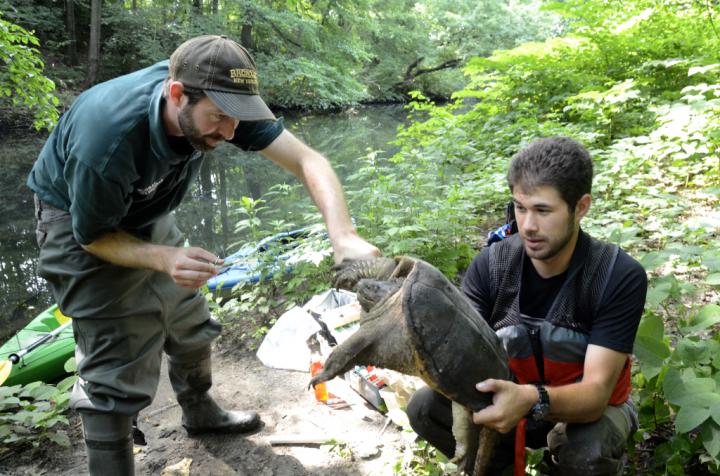
Credit: Julie Larsen Maher/WCS
A team of scientists and veterinarians gave a health evaluation of turtles living in the Bronx River, one of the most urbanized rivers in the U.S. and the only remaining freshwater river that flows through New York City.
Full physical exams given to 18 free-ranging native common snapping turtles (Chelydra serpentina) and nine nonnative invasive red-eared sliders (Trachemys scripta) revealed bioaccumulation of various environmental contaminants – including PCBs and heavy metals, as well as viruses and bacteria.
The study established a baseline health assessment to which future data can be compared, and expands the knowledge and patterns of health markers, environmental contaminants, and microorganisms of free-ranging turtles.
###
Media Contact
Stephen Sautner
[email protected]
Original Source
https:/
Related Journal Article
http://dx.




